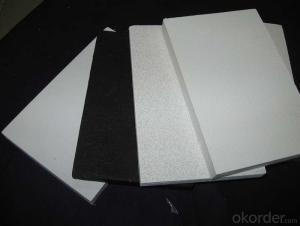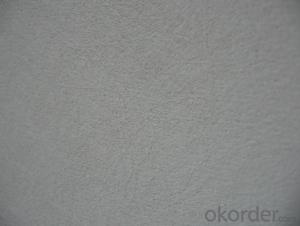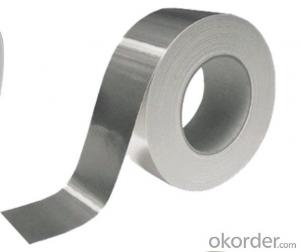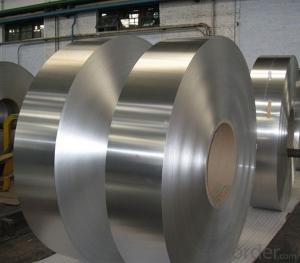White Aluminum Coil Stock
White Aluminum Coil Stock Related Searches
Led Light Bulbs For Ceiling Fixtures Led Lamps For Ceiling 42 In Ceiling Fan With Light Aluminum Coil Stock For Gutters Hole Saw For Aluminum Plate Aluminum Tread Plate For Trailer Bow Plate For Aluminum Boat Max Temp For Aluminum Foil Aluminum Foil For Key Fob Aluminum Foil For Hair FrizzHot Searches
Fiberglass Scaffolding For Sale Fiberglass Panels For Sale Fiberglass Greenhouses For Sale White Gazebo For Sale White Melamine Board Price Ceiling Fan Lowest Price White Plastic Folding Chairs Wholesale Company Office Design Stock Price For Aluminum Aluminum Coil Stock For Sale Aluminum Gutter Coil For Sale Used Aluminum Scaffolding For Sale 1/4 Aluminum Plate For Sale Aluminum Bar Stock For Sale Aluminum Round Stock For Sale Aluminum Diamond Plate For Sale Aluminum Scaffolding For Sale Craigslist 6061 Aluminum Plate For Sale Aluminum Dock Plate For Sale 7075 Aluminum Plate For SaleWhite Aluminum Coil Stock Supplier & Manufacturer from China
Okorder.com is a professional White Aluminum Coil Stock supplier & manufacturer, offers integrated one-stop services including real-time quoting and online cargo tracking. We are funded by CNBM Group, a Fortune 500 enterprise and the largest White Aluminum Coil Stock firm in China.Hot Products
FAQ
- Aluminum coils are protected from damage during transportation through a combination of packaging materials and handling precautions. Firstly, the coils are typically wrapped with protective materials such as stretch film or plastic wrap to prevent scratches and abrasions. This helps to maintain the integrity of the coil surface and prevent any potential damage. In addition to the outer wrapping, the coils are often placed on sturdy wooden pallets or skids to provide a stable base for transportation. This helps to minimize any movement or shifting during transit, which could otherwise lead to dents or deformations in the coils. Furthermore, coils may be secured using steel or plastic strapping to further ensure their stability and prevent any unintended unwrapping or unrolling. These straps are tightly fastened around the coils and pallets, creating a secure bundle that can withstand the potential jostling and vibrations that occur during transportation. During loading and unloading, specialized equipment such as forklifts or cranes are used to handle the coils with care. This minimizes the risk of dropping or mishandling, which could cause significant damage to the coils. Overall, a combination of protective packaging materials, secure pallets, and careful handling procedures are employed to safeguard aluminum coils from damage during transportation. These measures aim to preserve the quality and structural integrity of the coils, ensuring that they arrive at their destination in optimal condition.
- Aluminum coils have the capability to be welded or joined. Aluminum, being a highly weldable metal, can be easily joined through the utilization of different welding techniques. TIG welding, MIG welding, and resistance welding are the most commonly employed methods for welding aluminum coils. TIG welding is a precise and adaptable technique that employs a non-consumable tungsten electrode to generate the arc. This method is extensively utilized in welding aluminum coils due to its ability to offer exceptional control over the welding process, resulting in welds of high quality and strength. On the other hand, MIG welding employs a consumable wire electrode and a shielding gas to safeguard the weld zone from atmospheric contamination. This technique is faster compared to TIG welding and is often favored for larger production runs. Resistance welding is yet another prevalent method employed for joining aluminum coils. It involves the passage of an electric current through the overlapping metal surfaces to generate heat and pressure, thereby creating a robust weld joint. This technique is commonly used in industries that require high-speed production. It is important to note that welding aluminum coils necessitates specific techniques and considerations due to the distinctive properties of the metal. Aluminum possesses a lower melting point and higher thermal conductivity than other metals, which can make the welding process more challenging. Proper cleaning, preheating, and the selection of suitable filler materials are crucial in achieving successful welds. To summarize, aluminum coils can be welded or joined using various techniques such as TIG welding, MIG welding, and resistance welding. However, it is imperative to adhere to proper procedures and take into account the specific properties of aluminum to ensure the creation of strong and dependable welds.
- Yes, aluminum coils can be used in the production of aluminum honeycomb panels. Aluminum coils are commonly used as the primary material for making aluminum honeycomb panels. The coils are typically processed and shaped into thin sheets or layers, which are then bonded together with an adhesive to form the honeycomb structure. This lightweight and durable structure makes it ideal for various applications, such as aerospace, construction, and transportation industries.
- Aluminum roll width 750mm, single layer thickness 6.5mm, diameter 400mm., how to calculate the weight of the aluminum roll?
- You can use the outside diameter, the inner diameter and the width to get the volume. You know the density and volume, and then you can find the weight naturally
- I read the back of my deodorant and it said that it contains 14% Aluminum. Is that harmful for my baby?
- If you have to use antiperspirant then use one with very little aluminum. Deodorant has no aluminum. It is very bad for women generally it has been linked with giving people, especially women breast cancer. The aluminum goes into the blood stream and creates clots over time. Note to naive Krispy down bellow: seriously, get a clue.
- Yes, aluminum coils can be painted or coated with different colors. Aluminum is a versatile material that can be easily painted or coated to achieve the desired aesthetic appearance. The coil can be pre-painted or coated before it is formed into the desired shape, or it can be painted or coated after it has been formed into the desired shape. The paint or coating can be applied using various methods such as spraying, rolling, or dipping. Additionally, there are various types of paint or coating options available, including powder coating, liquid paint, or even anodizing, which can provide different colors, finishes, and levels of durability. Overall, painting or coating aluminum coils is a common practice to enhance their appearance and protect them from corrosion or other environmental factors.
- Depending on the desired outcome and application, there are several cutting and shaping methods for aluminum coils. One of the most frequently used methods is shearing, which involves cutting the aluminum coil with a sharp blade. Shearing is suitable for straight cuts and is commonly employed in manufacturing automotive parts or construction materials that require precise dimensions. Slitting is another method that involves cutting the aluminum coil into narrower strips. Industries such as packaging often utilize slitting to create thin strips of aluminum for products like food packaging or aluminum foil. For more complex shapes like curves or bends, press brake forming is often employed. In this process, the aluminum coil is placed in a press brake machine and bent into the desired shape using a punch and die. Press brake forming is commonly used in industries like aerospace or architectural design, where intricate shapes are necessary. Additionally, laser cutting is a popular method for cutting aluminum coils. This method uses a high-powered laser beam to cut through the aluminum, allowing for precise and intricate cuts. Industries like signage or electronics often utilize laser cutting for creating detailed designs. In conclusion, the common cutting and shaping methods for aluminum coils include shearing, slitting, press brake forming, and laser cutting. These methods provide manufacturers with various options to shape aluminum coils according to their specific needs and requirements.
- Yes, aluminum coils are available in custom sizes. Aluminum coils are versatile and can be manufactured to meet specific size requirements. This flexibility allows for a wide range of applications across various industries. Whether it's for HVAC systems, transportation, construction, or other purposes, aluminum coils can be custom-made to fit the specific needs of a project. Custom-sized aluminum coils ensure a perfect fit and optimal performance, offering greater efficiency and cost-effectiveness.














































